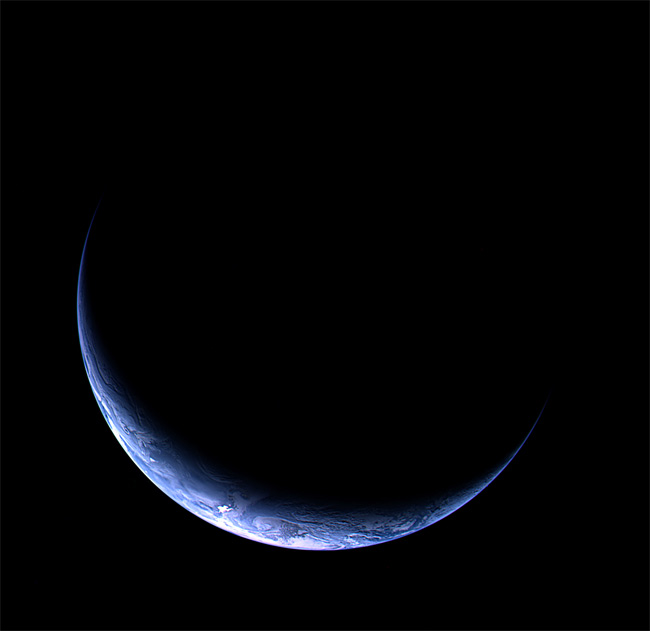How Earth Survived Its Birth

WASHINGTON ?Just how Earth survived the process of its birth without suffering an earlydemise by falling into the sun has been something of a mystery to astronomers,but a new model has figured out what protected our planet when it was still avulnerable, baby world.
In short,temperature differences in the space around the sun, 4.6 billion years ago,caused Earth to migrate outward as much as gravity was trying to pull itinward, and so the fledgling world found equilibrium in what we now know to bea very habitable orbit.
Planetslike the Earth are thought to form from condensing clouds of gas anddust surrounding stars. The material in these disks gradually clumpstogether, eventually forming planetesimals? the asteroid-sized building blocks that eventually collide to formfull-fledged planets.
As theplanets are forming, they are also thought tomigrate within the surrounding dust disk. The classic picture of thisplanet migration suggests that planets like (and including) the Earth shouldhave plummeted into the sun while they were still planetesimals.
"Well,this contradicts basic observational evidence, like We. Are. Here," saidastronomer Moredecai-Mark Mac Low of the American Museum of Natural History in New York.
Mac Low andhis colleagues investigated this apparent paradox and came up with a new modelthat explains how planets can migrate as they're forming and still avoid afiery premature death. He presented these findings here today at the 215th meetingof the American Astronomical Society.
One problemwith the classic view of planet formation and migration is that it assumed thatthe temperature of the protoplanetary disk around a star is constant intemperature across its whole span, Mac Low explained.
Get the Space.com Newsletter
Breaking space news, the latest updates on rocket launches, skywatching events and more!
It turnsout that portions of the disk are actually opaque and so cannot cool quickly byradiating heat out to space. This creates temperature differences across thedisk, and these differences have not been accounted for before in models. SoMac Low and his colleagues created new model simulations of planetmigration that include a disk with variations in temperature.
Whathappens when you change the temperatures in the disk is this: The temperaturechanges can completely alter the nature of the planet migrations, causingplanets to migrate outward instead of inward.
"Well,that is a major development," Mac Low said, because you can put it in themodel and see if outward migration cancels inward migration "and allows usto survive, or at least our progenitors."
Sureenough, that seems to be the case. Within the disk, zones of inward and outwardmigration develop that meet at equilibrium zones; once planets reach these,"they more or less sit there," Mac Low said.
Andeventually the disk dissipates to a point where its gravity can no longerinfluence the planets to pull or push them into new orbits.
So themodel suggests that outward migration "allows planetoids to survive,"which explain how planets in our solar system and others that we see in galaxysurvive, Mac Low said.
- Top 10 Waysto Destroy Earth
- Part ofPlanet Formation Possibly Seen in Real-time
- Images- The New Solar System
Join our Space Forums to keep talking space on the latest missions, night sky and more! And if you have a news tip, correction or comment, let us know at: community@space.com.

Andrea Thompson is an associate editor at Scientific American, where she covers sustainability, energy and the environment. Prior to that, she was a senior writer covering climate science at Climate Central and a reporter and editor at Live Science, where she primarily covered Earth science and the environment. She holds a graduate degree in science health and environmental reporting from New York University, as well as a bachelor of science and and masters of science in atmospheric chemistry from the Georgia Institute of Technology.









